Subfamily Perdicinae Rank Species | Phylum Chordata Genus Excalfactoria Higher classification Coturnix | |
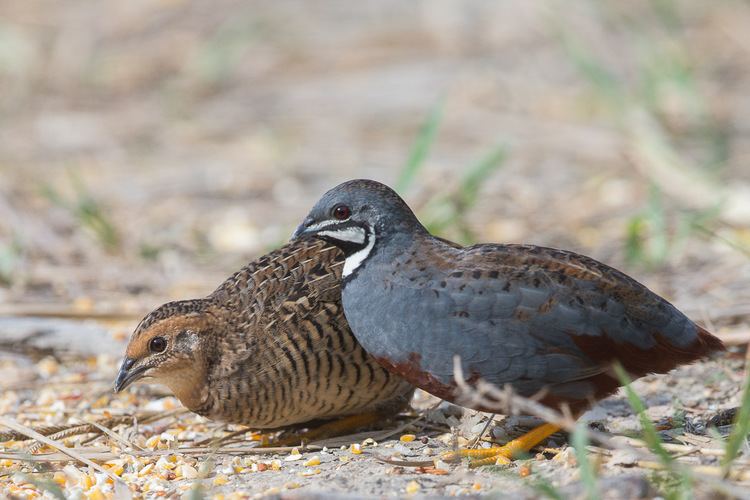 | ||
Similar Bird, Japanese quail, Common quail, California quail, Buttonquail | ||
Raising button king quail
The king quail (Excalfactoria chinensis), also known as the blue-breasted quail, Asian blue quail, Chinese painted quail, or Chung-Chi, is a species of Old World quail in the family Phasianidae. This species is the smallest "true quail", ranging in the wild from southeastern Asia to Oceania with 10 different subspecies. A failed attempt was made to introduce this species to New Zealand by the Otago Acclimatisation Society in the late 1890s. It is quite common in aviculture worldwide, where it is sometimes misleadingly known as the "button quail", which is the name of an only very distantly related family of birds, the buttonquails.
Contents
- Raising button king quail
- Button quail chicks king quails breeding and hatching
- Description
- Taxonomy
- Reproduction
- Australia
- State of Victoria Australia
- Aviculture
- Housing
- Diet
- Breeding
- Hybrids and mutations
- References
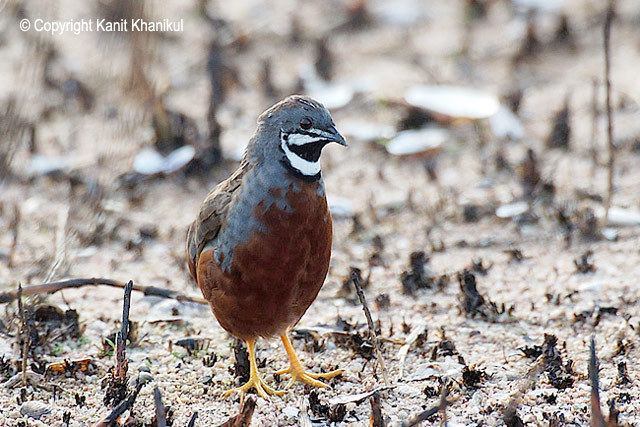
Button quail chicks king quails breeding and hatching
Description
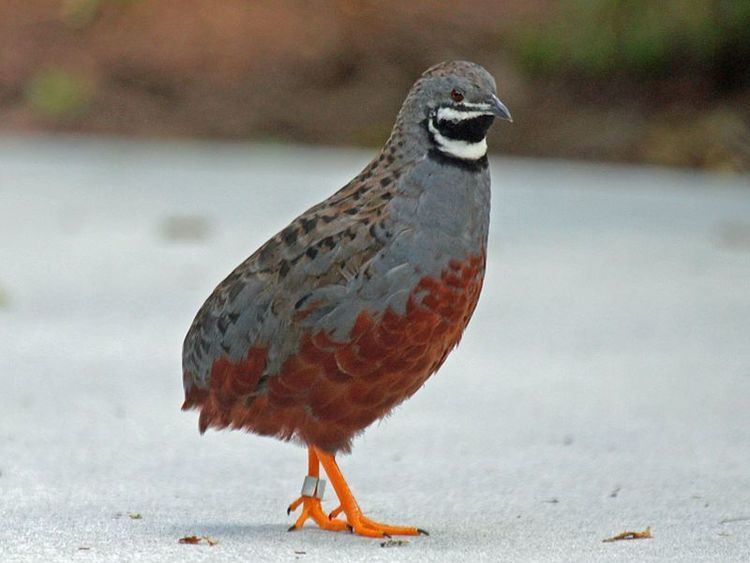
The male king quail comes in many colors, including blue, brown, silver, maroon, dark brown & almost black. They have orange feet which are hard and able to withstand a continuous life on the ground like many other game birds.The female is similar to the male but cannot come in shades of blue. They can live up to 13 years in captivity but only 3-6 on average. In the wild they may live only 1.5 years. The eggs of king quail are a light, creamy-brown colour and slightly pointed at the 'top'; roughly ovular in shape.
Taxonomy
There are nine recognized subspecies:
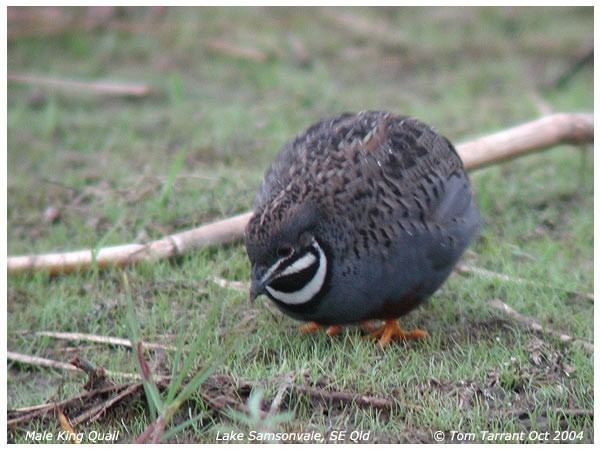
Reproduction

Clutch size varies anywhere from 5 to 13 eggs. Before incubation starts all the eggs composing the clutch will be laid. In captivity, if the female lays too many eggs, they should be taken, as after about 10 days they go cold and die. In captivity, the ideal number of eggs in a clutch is 6 to 8. The chicks hatch after about 19 days.
Australia
King quail are not listed as threatened on the Australian Environment Protection and Biodiversity Conservation Act 1999.
State of Victoria, Australia
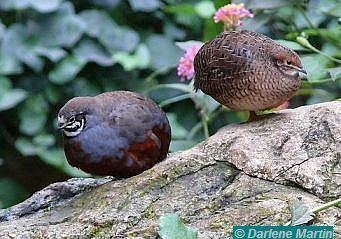
This species is listed as threatened on the Victorian Flora and Fauna Guarantee Act (1988). Under this Act, an Action Statement for the recovery and future management of this species has not been prepared.
On the 2007 advisory list of threatened vertebrate fauna in Victoria, this species is listed as endangered.
Aviculture

This quail has been very popular to keep and breed for many years; numerous mutations have been developed. They are quite hardy once they have adjusted to their surroundings and will keep the bottom of an aviary spotless. Yet these small quails are more than just effective scavengers. They provide colour, & charm to a part of the aviary that otherwise may not be used, & their breeding behavior is fascinating, especially the development of their chicks. A great advantage of these quails is that they will live exclusively on the ground, & will not interfere with other birds. The cost of purchasing and maintaining them is very little. These quails take only a small amount of time to feed and water and, in some cases, they have been known to become hand-tame.
Housing
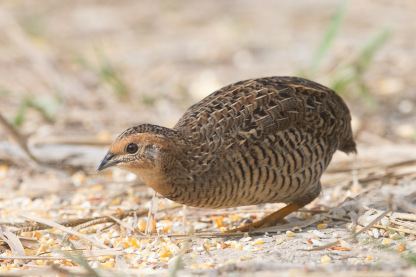
Best housed in pairs, trios, or quatuor in a planted aviary, but can be kept singly in bird cages, or indeed in colonies in large flights. Some fighting among males will happen. It will be important to watch for over-bullying in the female pecking order, as well as being cautious that other dynamics in social groups exist, & these may result in injury. Suspension cages do not work well for this species of quail as they do for the slightly larger species such as northern bobwhite, California quail, or Japanese quail because of their smaller sized feet; a much finer size floor wire would need to be employed. King quail also are not generally required to be "farmed" in such a manner as the aforementioned quail species; as they are not bred for consumption or for game release.
Diet
Poultry Layers Mash should be a staple part of the diet of captive quails. It is high in the right kinds of protein, vitamins, & minerals which they generally do not receive from grains alone. It also contains grits which are necessary for the birds to grind down food in their gizzard. A complement of grains in the form of a finch seed mix is ideal. King quail happily consume seed up to the size of hulled wheat or oats. Green food in the form of silver beet, spinach, dandelion flowers, chickweed & et cetera should be offered frequently. Fresh water must be supplied at all times. Although livefood is taken, it is not overly important for breeding birds. They will catch their own insects in a planted aviary.
Breeding
They are hyperactive breeders: a female will lay an egg a day if kept on the proper diet. She will make a soft "crowing" noise to attract a mate. Nesting sites can be as spartan as a quiet corner or a depression in the ground against a wall. Preferably, a clump of grass. tea tree branches, or pile of loose herbage should be provided. Often a hen will lay eggs on the aviary floor without the use of a nest. This is a sign that the birds are not content with the existing facilities and the provision of a sheltered nest site may result in a nest being built. The cock usually selects the nest site.
The nest is a simple scrape in the ground, lined with grasses and is built by the hen with some assistance from the cock. The eggs measuring 25 x 19mm are variable in colour form the palest of browns to dark olive and peppered with fine black spots. Clutch size varies from 4-13, but occasionally a hen will be found incubating upwards of 20 eggs. It is usually a combined clutch from a number of hens and due to the difficulties of turning and covering a clutch of that size, hatchability is often poor. It may be better to remove some of the eggs and artificially incubate them or foster them.
They usually breed year round; incubation times are from 18–23 days before chicks hatch. The hen bird will care for the chicks until around 4 weeks of age where they should be separated from parent birds into a separate aviary. It is recommended that you have at least 20² cm per bird.
Chicks are often referred to as "Bumblebees" because of their size, & fuzziness. Raising chicks by hand requires patience. They are easily drowned, so a water container as small as possible needs to be offered: You will need to remember that it will dry out very quickly. A beer cap (or several) is a good water receptacle for the first week or two. Chick starter crumbs (medicated) will need to be ground down to an almost dust consistency using a mortar and pestle. A rough substrate or medium has to be used to prevent spraddle leg (also known as Splayed Leg). Paper towels are usually too smooth, a tea towel or some type of chip is best employed in the brooder. A heat source in the form of a low watt, older type household light bulb is great, but they do burn out frequently. To avoid this, your brooder should have two bulbs going at any one time. The bulb should be able to be raised or lowered depending on ambient temperature: The chicks need to be kept warm but not cook.
Hybrids and mutations
Hybrids of king quail x brown quail are known.
Silvers & cinnamon are the most common colour varieties. Pied, albino, charcoals, Dilutes are becoming more common. Mutations can be combined.
Occasional cock-feathered hens appear: This is not a mutation as such, but one of a few conditions which has affected normal hormonal balances. It is most often seen when a hen has an ovarian cyst, or growth. They usually stop laying eggs, but can live for a number of years happily just looking like a male. In one case silver hen was kept for many years by herself, moulted into cock plumage, & laid only extremely pale green shelled eggs for a few seasons before passing old age.
Diet
In the wild, the diet of king quails consists of small bugs, seed and various grasses that are available at the time.
In aviculture, all birds should be fed a variety of seeds as well as a healthy range of fruit and vegetables. During breeding, hens should be fed calcium-rich food sources such as shell grit to prevent egg-bounding. Newly hatched chicks should be fed high protein chick crumb mixed in with a little water. Other sources of protein include mealworms and various bugs.
